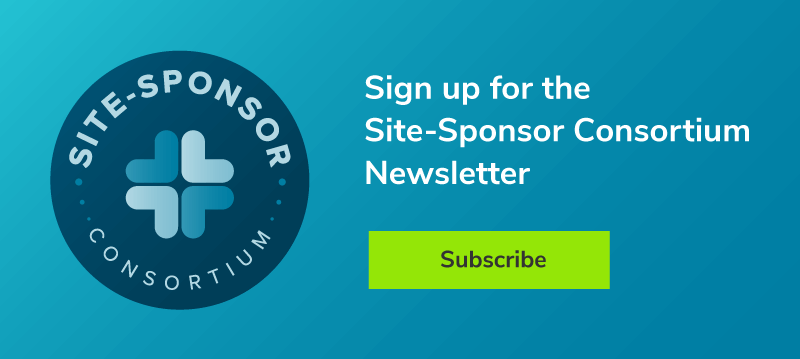Regulatory Trends in Cell and Gene Therapies

The field of cell and gene therapies (CGT) is constantly evolving, and there has been significant progress in this area of research. However, despite the promise of these therapies, the regulations governing them lag the science, which in turn hinders the clinical translation of these novel medicines. There have been recent signals indicating the Food and Drug Administration (FDA) plans to provide greater support for CGT, addressing key issues continuing to impede their development.
Recent Problems in Cell and Gene Therapy Development
Dealing with confusing regulatory guidelines is one of the top obstacles researchers face as they develop CGT products1. In the last two years, there haven’t been any CGT product approvals, primarily because of the COVID-19 pandemic. The FDA, already chronically understaffed, reassigned many reviewers to focus on COVID treatments. This made it difficult to get CGT through the review process in a timely manner. But review issues are not the only problems.
Bottlenecks in the manufacturing process, supply chain issues such as accessibility of good manufacturing practice (GMP)-grade reagents, and shortages of qualified scientists and engineers have caused many therapies to fail at critical stages of the clinical development pipeline. Adding to all of this is the financial feasibility of generating small-batch CGT products for ultra-rare diseases with limited patient populations. Many companies are unable to develop these niche therapies because of the associated costs and limited financial return.
Current Regulatory Trends in Cell and Gene Therapy
The current regulatory landscape of CGT is undergoing significant changes out of necessity. The following are major recent developments, including FDA-led initiatives and new draft guidance for specific types of therapies.
Trend One: Expected Growth in Cell and Gene Therapy IND filings
Statistics recently reported by the director of the FDA’s Office of Tissues and Advanced Therapies (OTAT), indicated the number of CGT investigational new drug (IND) filings submitted to the FDA dropped from 350 in 2020 down to 299 in 2021. However, these numbers are expected to increase again in the coming years. OTAT also noted the recent increase in the number of Breakthrough (BT) and Regenerative Medicine Advanced Therapy (RMAT) designation requests, applications which are made alongside IND submission or during an existing IND filing. There has also been an increase in the number of accepted RMAT requests. BT and RMAT designations provide similar benefits to fast-track designation, however, they also require higher levels of evidence to support their status in either of these categories.
Trend Two: The Bespoke Gene Therapy Consortium
The FDA recently announced a new initiative as part of its NIH Accelerating Medicines Partnership Program. The Bespoke Gene Therapy Consortium (BGTC)2 aims to overcome major obstacles and streamline the development process for small-batch gene therapies. The BGTC will act as a traffic light for these therapies, providing information on basic and clinical research, manufacturing, production, and regulatory requirements.
While each ultra-rare genetic disorder may have a very small patient population, when these conditions are grouped together, they make up a significant number. The FDA has indicated financial incentives are also required to encourage companies to create therapies not “commercially viable”.
Trend Three: INTERACT Meetings and a Gene Therapy Pilot Program
A relatively recent initiative by the FDA is CBER’s “INTERACT”3 informal meeting program. This program is an attempt to address the questions and needs experienced by the CGT industry within current clinical frameworks and involves informal meetings between CBER staff and researchers/sponsors who are at the pre-IND stage of development. No Prescription Drug User Fee Act (PDUFA) fee is associated with the INTERACT meetings. They are granted based on CBER’s availability and resources, and they do not replace other formal meetings. Consequently, it is recommended to request a pre-IND meeting prior to submitting an IND to initiate the first-in-human Phase I study. This is particularly important when seeking guidance on toxicology study designs.
Another new initiative called the Gene Therapy Pilot Program involves the FDA providing real-time feedback to sponsors throughout the clinical development process. Newly created regulatory pathways like the Regenerative Medicine Advanced Therapy (RMAT) designation4. It is hoped that the combination of new meeting modalities will expedite the development process and submission review time. Taken together, these initiatives offer more frequent interactions between sponsors and regulators to communicate and discuss technological advances.
Trend Four: New Draft Guidance for Gene Therapies and CAR-T Cell Therapies
In March 2022, the FDA released two new draft guidance documents to help sponsors who are developing CGT products. The first is titled, Human Gene Therapy Products Incorporating Human Genome Editing, and provides recommendations on the information to include in IND filings for these therapies, including study design, safety, and manufacturing.
The second draft guidance is Considerations for the Development of Chimeric Antigen Receptor (CAR) T Cell Products. While the title refers specifically to CAR-T cell therapies, which are used to treat cancer, the FDA remarked these guidelines are also more applicable to other gene-edited cell therapies, such as natural killer (NK) and T cell receptor (TCR) cell therapies. The document includes recommendations on safety, manufacturing, clinical study design, and analytical comparability of CAR-T products.
Trend Five: Regulatory Harmonization and Agreements on Surrogate Endpoints
A major topic of discussion is the significant problems in multi-country clinical trials due to the different requirements of the parties involved. A complicating factor is the definitions of CGT products and their components differ between countries, making it difficult to achieve any consensus on their regulation. Harmonization of CGT requirements and improved inter-country communication are key for the progression of the field throughout Europe.
Lack of agreement on surrogate endpoints in clinical trials was another key theme during the session. The FDA’s accelerated approval program, which allows for earlier approval of new therapies addressing unmet medical needs, is based on surrogate endpoints. These endpoints are markers designed to predict clinical benefit but are not actual measurements of clinical benefit as would be expected from standard trials.
Accelerated approval using surrogate endpoints is necessary to develop gene therapy products for rare disease populations. However, the FDA often does not agree to surrogate endpoints being accurate predictors of the clinical benefit of a therapy before the trial begins. This lack of agreement between the FDA and trial sponsors leads to significant problems at later stages of clinical trials. Marks indicated this issue needs to be addressed for CGT products to have reasonable chances of success.
Improving Communication Between FDA and Sponsors
Communication issues between sponsors and the FDA is an ongoing issue in CGT development. For researchers and sponsors, progressing from pre-clinical research into clinical trials can be an extremely challenging process, not least because of unclear regulatory guidelines. Fortunately, it seems the FDA is now making it a priority to more effectively communicate with those developing CGT products, encouraging a growth trajectory in the coming years.
OTAT recently announced its plans to provide increased guidance for sponsors, facilitating a variety of workshops and webinars. Increased consistency in the review process and timeliness of reviews have also been touted as key priorities, along with broader public messaging surrounding these therapies. Through these initiatives and further engagement with the industry, the FDA hopes to enable the development and, most importantly, success, of more complex CGT products, bringing them to patients sooner.
References
- “What is Gene Therapy?” U.S. Food & Drug Administration. Accessed 4/7/20: https://www.fda.gov/vaccines-blood-biologics/cellular-gene-therapy-products/what-gene-therapy
- https://www.nih.gov/research-training/accelerating-medicines-partnership-amp/bespoke-gene-therapy-consortium
- FDA, CBER, CDER. Formal Meetings Between the FDA and Sponsors or Applicants of PDUFA Products – Guidance for Industry. (2017). Available online at: https://www.fda.gov/media/109951/download (accessed on January 8, 2022).
- FDA. Regenerative Medicine Advanced Therapy Designation. (2019). Available online at: https://www.fda.gov/vaccines-blood-biologics/cellular-gene-therapy-products/regenerative-medicine-advanced-therapy-designation (accessed on January 11, 2022).



